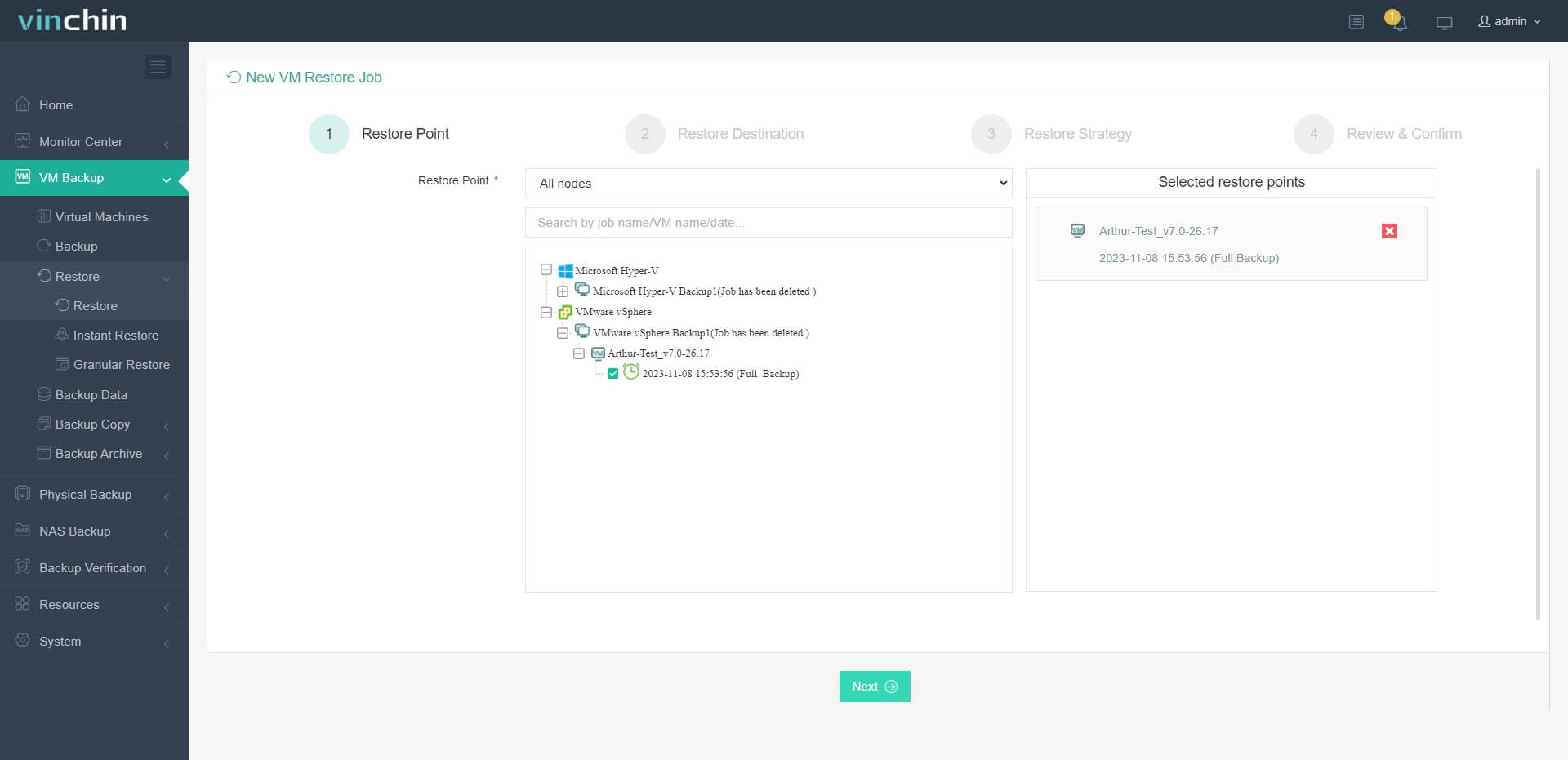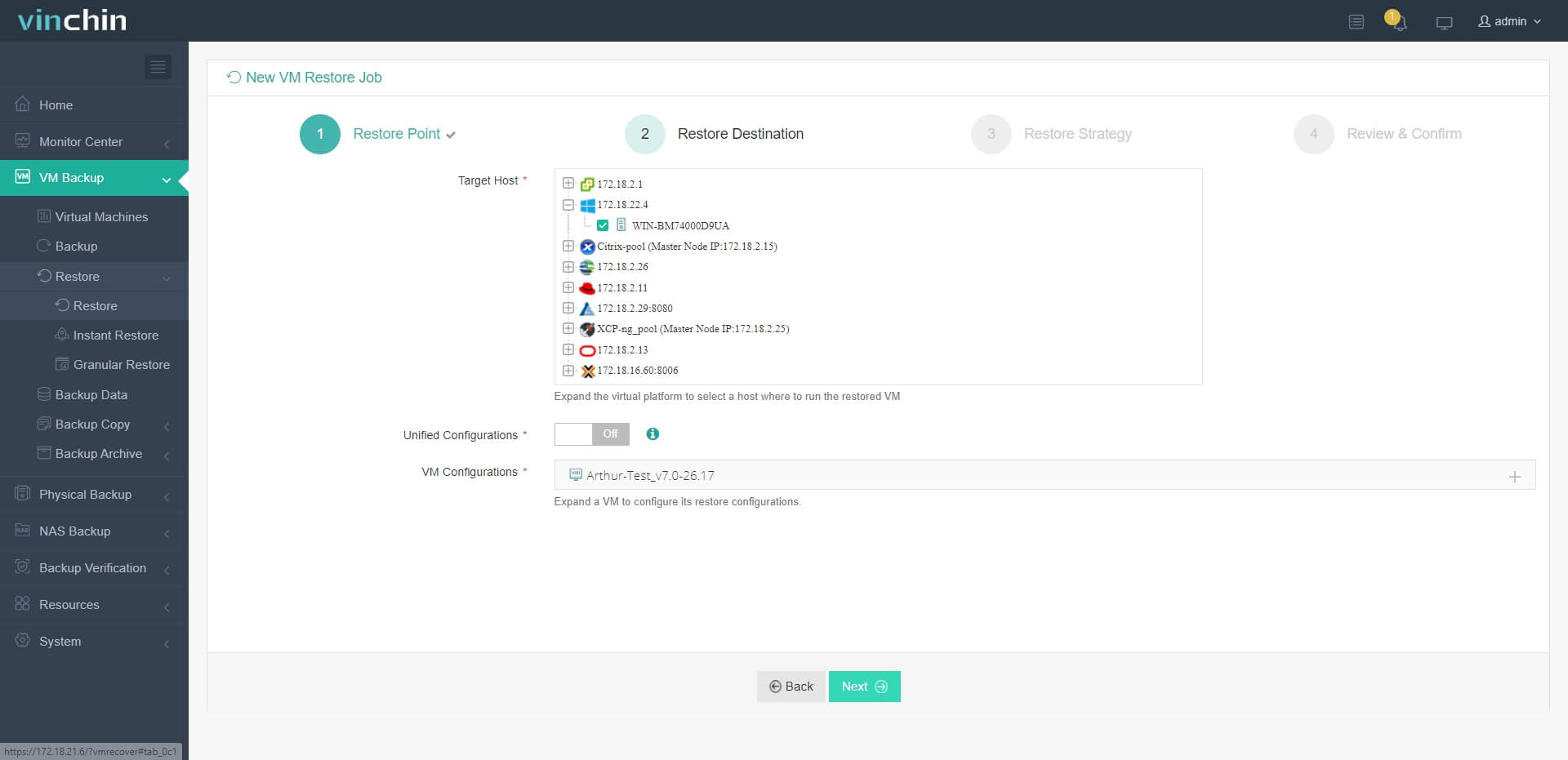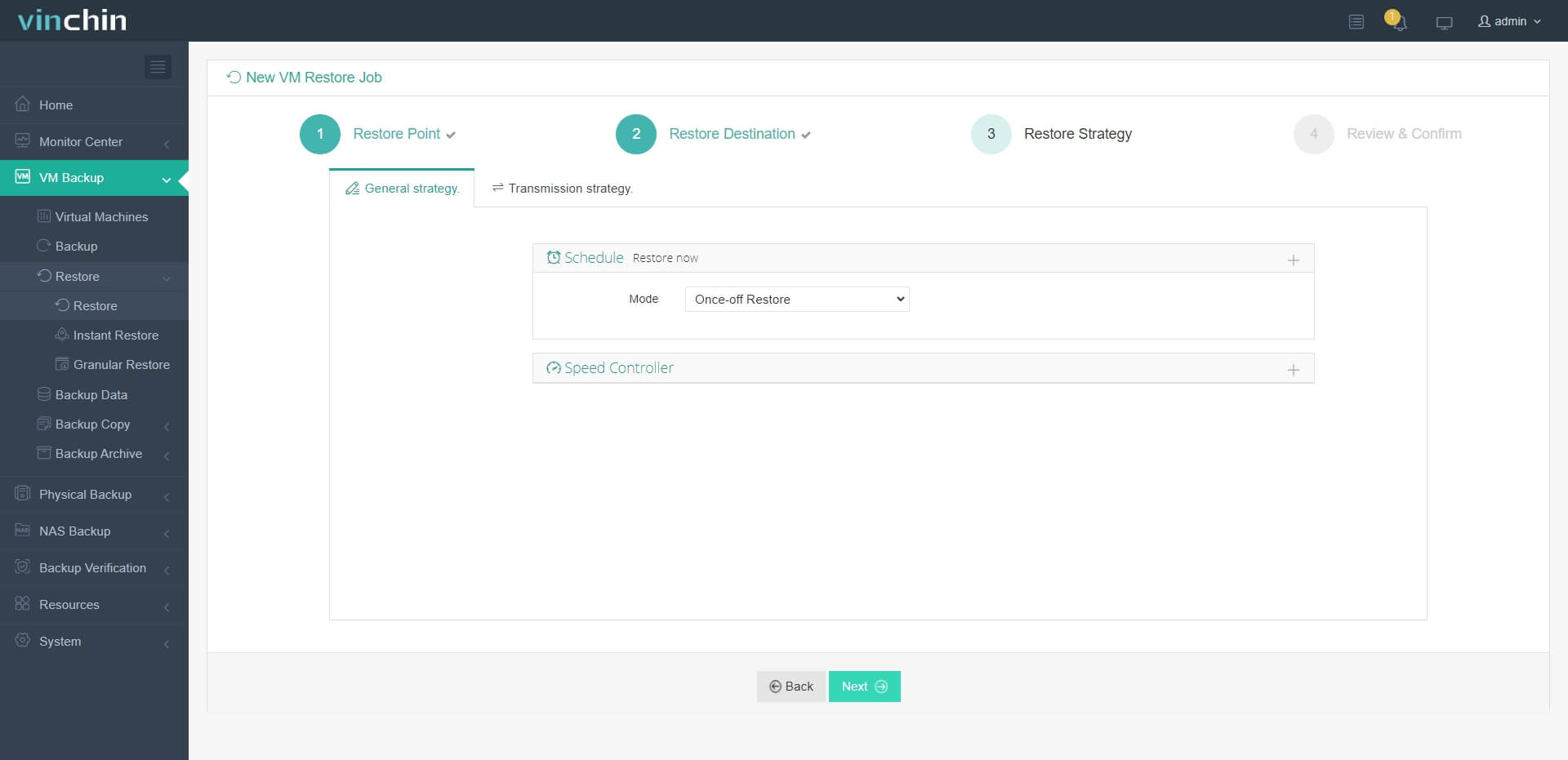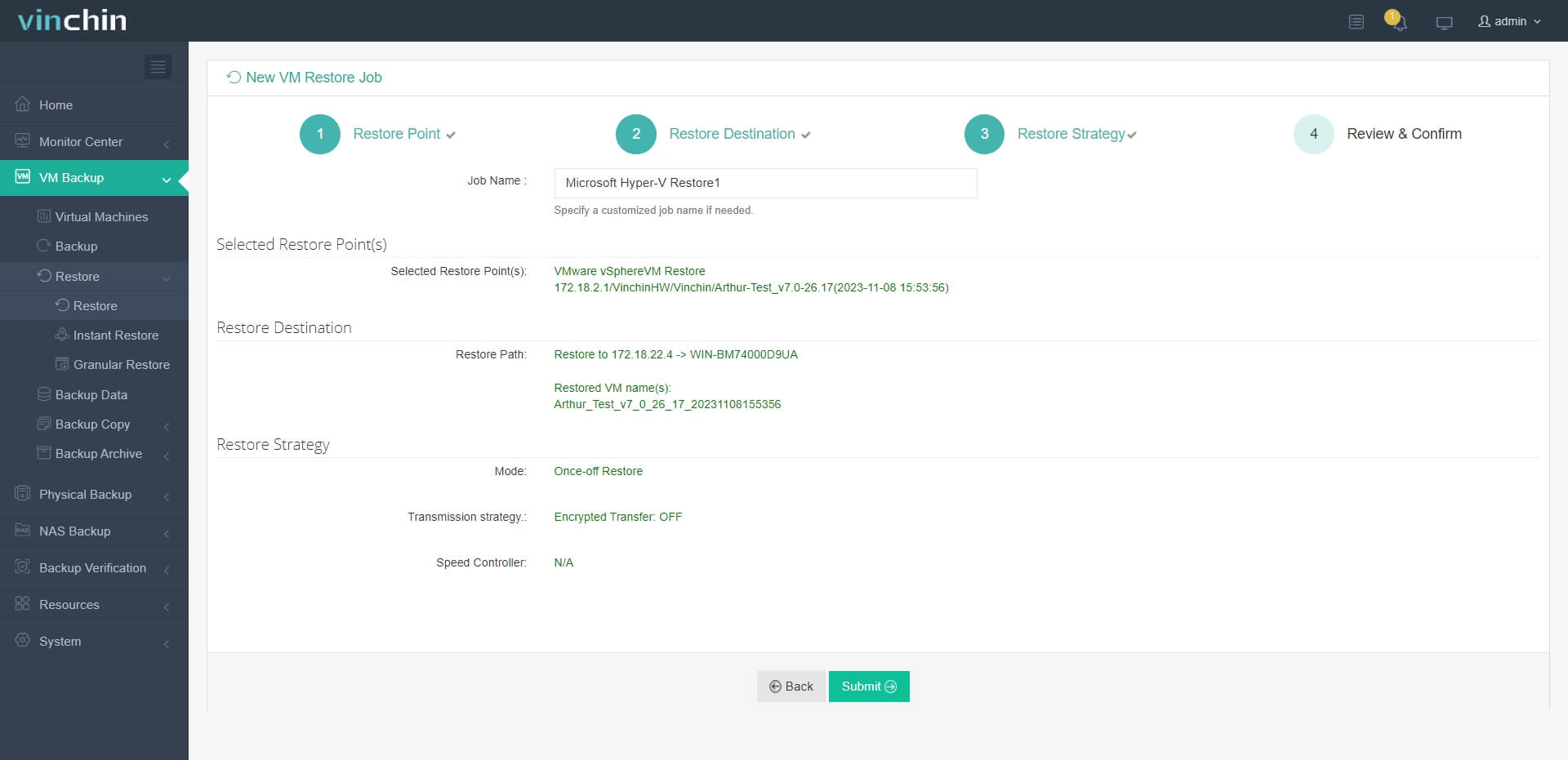-
What is Hyper-V?
-
Key features of Hyper-V
-
Key benefits of Hyper-V
-
What is VMware vSphere?
-
Key features of VMware
-
Key benefits of VMware
-
Hyper-V vs VMware: Comparison table
-
Hyper-V vs VMware: How to choose?
-
How to migrate VM from VMware to Hyper-V?
-
Hyper-V and VMware FAQs
-
Wrap Up
In today’s digital world, server virtualization is a key technology. It allows a single physical server to be divided into multiple virtual servers. This brings many benefits, such as improving the use of resources, reducing costs, and simplifying management.
Organizations usually deploy type-1 hypervisor, which directly runs on physical hardware of the host server with direct access to hardware resources, in the data centers to build a more well-performed flexible production environment to handle massive virtual machines, projects, and data.
Among all available type-1 virtualizations in the market, VMware vSphere and Hyper-V have been the top two options of many people for years. However, choosing between the two can be difficult for many users. What’s more, due to the significant changes brought about by Broadcom’s acquisition of VMware, some users are considering migrating from VMware to Hyper-V. Although both offer different features and functions, you must consider your own business needs to select the right solution for yourself. This blog is going to help you better decide by making a brief comparison.
What is Hyper-V?
Hyper-V is a Microsoft-produced virtualization product that works more closely with Windows servers. It is based on microkernelized hypervisor, which means driver will be installed on each guest OS instead of directly on the hypervisor layer like VMware, so that if the driver of a single VM faces some bugs, the rest of virtual machines on the host will not be affected.
Key features of Hyper-V
-
Dynamic Memory: allow memory modification of an online Hyper-V host to balance the resource in guest OS.
-
Encrypted Networks: encrypt the traffic of virtual network between virtual machines to enhance security.
-
Shielded VMs: protect virtual machine from malware using multiple security guard techniques.
-
Live Migration: migrate VMs from one Hyper-V host to another without any downtime.
Key benefits of Hyper-V
1. Support for Windows guest virtual machines: Hyper-V is integrated with Windows Server, offering tighter compatibility and support with the Windows server systems. For example, Hyper-V may have an advantage in speed when performing P2V conversions.
2. Hyper-V licensing method (for small-scale virtualization): Hyper-V's licensing is generally based on the number of guest virtual machines. If a physical host is planned to have only a few guest virtual machines, this licensing method can save on the deployment costs of enterprise virtualization.
3. Microkernel architecture: In Hyper-V, drivers are installed within the guest operating systems, not at the hypervisor layer. The advantage of this architecture is that if a driver on a guest virtual machine has compatibility issues or bugs, it will not affect the other guest virtual machines. VMware, on the other hand, uses a monolithic kernel architecture with drivers centralized in the hypervisor. If bugs occur, they can be harder to detect and resolve, potentially affecting the performance of the entire virtual environment or reducing its security.
What is VMware vSphere?
VMware vSphere is the commercial name for the entire VMware suite. The VMware vSphere stack includes virtualization, management, and interface layers. The two core components of VMware vSphere are the ESXi server and the vCenter Server. ESXi is a hypervisor where you can create and run virtual machines and virtual appliances. The vCenter Server is a service for managing multiple ESXi hosts connected in a network and pooling host resources.
VMware vSphere simplifies administration in a variety of x86-based environments, including frequently used operating systems such as Microsoft Windows, Linux, and Solaris x86.
Key features of VMware
-
vMotion: live migration of an in-use virtual machine.
-
Storage vMotion: migrate VM disks from one ESXi host to another without business downtime.
-
VMware DRS (Distributed Resource Scheduler): dynamically calculating and allocating computing resources for optimized resource access.
-
HA (High Availability): automatically reboot a crashed virtual machine on a new ESXi host.
-
FT (Fault Tolerance): automatically switch the workload of a crashed virtual machine to its live shadow server for business continuity.
Key benefits of VMware
1. Storage virtualization: VMware's storage virtualization technology, such as VMware vSAN, is very advanced, allowing for more flexible management and optimization of storage resources.
2. Virtual networking: VMware's NSX platform offers sophisticated network virtualization capabilities. It can create complex, multi-tier virtual networks that can span physical data centers and provide advanced network security features.
3. High availability and disaster recovery: VMware provides a range of high availability and disaster recovery solutions, like Site Recovery Manager (SRM), which help ensure business continuity and data protection.
Hyper-V vs VMware: Comparison table
|
Feature/Aspect |
Microsoft Hyper-V |
VMware vSphere |
|
Licensing Cost |
Varies by Windows Server license; some versions free |
1. Per core liscensing 2. Per VM licensing 3. vSphere+ subscription capacity based licensing 4. Per CPU licensing |
|
Hypervisor Type |
Type 1 (bare-metal) |
Type 1 (bare-metal) |
|
Management Tools |
Hyper-V Manager, System Center Virtual Machine Manager |
vCenter Server |
|
High Availability Features |
Failover Clustering, Replica |
High Availability, Fault Tolerance |
|
Live Migration/vMotion |
Live Migration |
vMotion |
|
Storage APIs |
Supports SMB, Storage Spaces |
Storage APIs for Array Integration, Multipathing |
|
Integration with Cloud Services |
Azure integration (Azure Site Recovery, etc.) |
VMware Cloud on AWS, etc. |
|
Security Features |
Shielded VMs, Host Guardian Service |
VM Encryption, Secure Boot, vTPM |
|
Ease of Use |
Generally considered user-friendly, especially for Windows-centric organizations |
Considered user-friendly with a mature interface |
Hyper-V vs VMware: How to choose?
When choosing one virtual platform as the primary production environment, there are five key considerations.
1. Operation Requirement
First, evaluate the scale of your IT environment. VMware vSphere is usually used in large data centers because its DRS feature help organizations with massive virtual machines to dynamically utilize resources to the maximum. However, if it’s for SMBs, Hyper-V would turn out to be a good choice because this product can absolutely handle the basic yet important management and computing tasks well.
On the other hand, your preference on the Linux/Windows operating system also matters. If most parts of your IT workloads are on Linux servers, consider VMware first; On the contrary, Hyper-V turns out to be the best virtualization solution for Windows servers no matter from the perspective of system compatibility or functionality support.
2. Management
Both VMware and Hyper-V provide centralized management console, VMware vCenter and Hyper-V Manager, and both of them apply Windows PowerSHELL to realize automated management, and provide remote access to simplify administration.
3. Memory Control
Hyper-V doesn’t support memory over-commitment, that is, the total memory capacity allocated to the child virtual machine cannot exceed the physical memory capacity. This means that part of the memory needs to be reserved on the host to prevent guest VM on other hosts from not being able to do a failover switch. This will cause a great waste of memory. However, VMware offer more advanced features that allows users to allocate extra memory resources to improve the overall density of virtual machines.
4. Security
Both VMware and Hyper-V provide specific features for workload security. For example, host firewall, host certificates, and robust workload encryption technique from VMware; Network encryption, guarded fabric, and shielded VMs from Hyper-V. Generally speaking, the security level of VMware is rather high, but more security features are given by Hyper-V, so it can perform to protect your virtual machines more extensively.
5. Affordability
VMware vSphere provides Essential, Essential Plus, Standard and Enterprise Plus that can be licensed by the number of physical CPUs. The first two are cheaper, which is designed for small organizations and support 3 servers up to 2 CPUs each. However, it is not so friendly for environment expansion as your business data and operation requirement grow with time, you may then need to choose Standard or Enterprise Plus--which is much more pricey--for more scalable and advanced virtualization management. Comparatively, Hyper-V performs as a more cost-effective solution with the same stability of core features.
How to migrate VM from VMware to Hyper-V?
Vinchin Backup & Recovery is not only a professional backup solution for virtual machine, but also an advanced VM migration solution, supporting VMware vSphere, Hyper-V, Proxmox, XenServer, XCP-ng, oVirt, OLVM, RHV, OpenStack, etc. By adding both virtualized platforms into the backup system, you can perform easy agentless V2V migration with a user-friendly web console.
There is the built-in conversion engine in the backup system, you just need to select the VM you need to move it to another virtualized platform.
It only takes 4 steps to migrate VMs from VMware to Hyper-V:
1.Choose the VM you want to restore.

2.Select the Hyper-V host to run the restored VM.

3.Select the restore strategy.

4.Review and submit the job.

Vinchin Backup & Recovery safeguards your virtual environment and facilitates VM migration across hypervisors. Try it fully-featured for 60 days. Share your needs with us for a tailored solution.
Hyper-V and VMware FAQs
1. Q: Is there any VMware ESXi alternative in 2024?
A: VMware ESXi alternatives include Proxmox VE for open-source flexibility, Citrix Hypervisor, and Red Hat Virtualization for commercial support, as well as community options like oVirt and XCP-ng. KVM serves as a core Linux virtualization infrastructure, and Oracle VM Server offers another enterprise solution. Each provides varying features, management interfaces, and cost structures suitable for different use cases.
2. Q: What are the system requirements for Hyper-V?
A: Hyper-V requires a 64-bit processor with SLAT, VM Monitor Mode extensions, minimum of 4 GB RAM, and virtualization technology enabled in the BIOS or UEFI settings. Windows 10/11 Pro, Enterprise, or Education editions are required for the Hyper-V feature.
Wrap Up
Both VMware vSphere and Hyper-V have their own pros and cons in different aspects, but the general idea is clear: if you have rather sufficient budgets for building a more advanced and well-functioned virtual environment, and your current IT projects mainly rely on Linux servers, VMware is a better choice; But if you already have most of your workloads settled in Windows ecosystem, and have the goal to build a practical virtual environment with high stability in a more cost-effective way, Hyper-V should be the winner. You can choose the one that’s most suitable for you regarding the actual production scenarios.
Share on:








